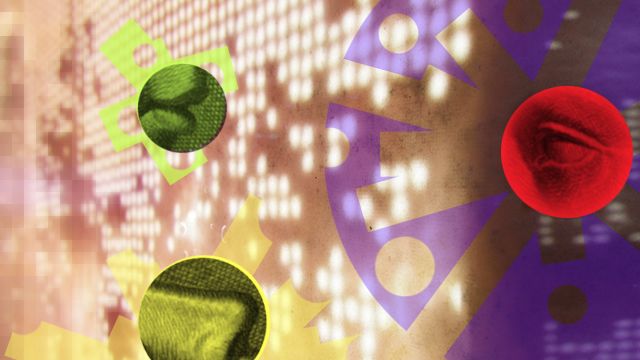Imaginary and seduction: the aesthetics communication
DOI:
https://doi.org/10.15448/1980-3729.2012.3.12896Keywords:
Imaginary, aesthetics, seduction, beautyAbstract
This paper is a reflection about images and their aesthetics, for cultural studies of the imaginary. Based on Gilbert Durand (1998), the imaginary is near culture, while maintaining relationships between the subjective world and the objective reality. The author emphasizes that reality is triggered by the presence of the imaginary, which is contained in the imagination. Acting in the imagination, the aesthetic seduction runs through that which inspires pleasure, as well as aesthetics beyond beauty: the mythology shows mermaids, gargoyles, grotesque images that also inspired pleasure as much as the traditional concept of what is considered beautiful. In the contemporaneity the imaginary is seduced by artificial means extensively propagated in the media as a possibility of recovery of visual aesthetics, which runs the risk of falling at the other end, leading to bizarre consequences or even grotesque ones.Downloads
References
AQUINO, Tomás de. Summa Teologiae (II, 145,2). In: ECO, Umberto (Org.). História da beleza. Rio de Janeiro: Record, 2004, p. 89.
BAUMAN, Zygmunt. O mal-estar da pós-modernidade. Rio de Janeiro: Zahar, 1998.
BEAUMONT, Leprince de. La Belle et la Bête. In: PERRAULT, Claude. Contes de Fées. Tirés de Claude Perrault de Mmes. D’Aulnoy et Leprince de Beaumont. Paris: Brodard et Taupin, 1955.
BETTELHEIM, Bruno. A psicanálise dos contos de fadas. Rio de Janeiro: Paz e Terra, 1980.
BULFINCH, Thomas. O livro de ouro da mitologia. Histórias de deuses e heróis. Rio de Janeiro: EDIOURO, 1999.
DONDIS, Donis. Sintaxe da linguagem visual. São Paulo: Martins Fontes, 2000.
DURAND, Gilbert. O imaginário. Ensaio acerca das ciências e da filosofia da imagem. Rio de Janeiro: Difel, 1998.
ECO, Umberto (Org.). História da Beleza. Rio de Janeiro: Record, 2004.
______. (Org.). História da feiura. Rio de Janeiro: Record, 2007.
KANT, Immanuel. Crítica da faculdade do juízo. Rio de Janeiro: Forense Universitária, 1995.
KELLNER, Douglas. A cultura da mídia – estudos culturais: identidade política entre o moderno e o pósmoderno. São Paulo: EDUSC, 2001.
LEÃO, Pepita de. Carlos Magno e seus cavaleiros. Porto Alegre: Globo, 1944.
LIPOVETSKY, Gilles. Sedução, publicidade e pós-modernidade. Revista Famecos, Porto Alegre, n. 12, p. 7-13, jun. 2000.
MAFFESOLI, Michel. O eterno instante. Lisboa: Piaget, 2001.
______. A contemplação do mundo. Porto Alegre: Artes e Ofícios, 1995.
______. O imaginário é uma realidade. Revista Famecos, Porto Alegre, n. 15, p. 74-81, ago. 2001a.
______. O eterno instante. O retorno do trágico nas sociedades pós-modernas. Lisboa: Instituto Piaget, 2001b.
MALRIEU, Philippe. A construção do imaginário. Lisboa: Instituto Piaget, 1996.
MÜLLER-BROCKMANN, Josef; MIELKE, Joaquín C. Historia de la comunicación visual. México: Gustavo Gili, 1998.
PAVIANI, Jayme. Estética mínima. Notas sobre arte e literatura. Porto Alegre: EDIPUCRS, 1996.
PLOTINO. A alma, a beleza, a contemplação. Sobre o belo, Enéada, I, 6. Trad. Imael Quiles. São Paulo: Associação Palas Atena, 1981.
POSTIC, Marcel. O imaginário na relação pedagógica. Rio de Janeiro: Zahar, 1993.
SODRÉ, Muniz; PAIVA, Raquel. O império do grotesco. Rio de Janeiro: Mauad, 2002.
SOURIAU, Étienne. A correspondência das artes: elementos de estética comparada. São Paulo: Cultrix/EDUSP, 1999.
TEIXEIRA COELHO, José. Moderno pós-moderno. São Paulo: Iluminuras, 1995.
ZILLES, Urbano. Estética mínima: notas sobre arte e literatura (Apresentação Jayme Paviani). Porto Alegre: EDIPUCRS, 1996.
Downloads
How to Cite
Issue
Section
License
Copyright
The submission of originals to Revista Famecos implies the transfer by the authors of the right for publication. Authors retain copyright and grant the journal right of first publication. If the authors wish to include the same data into another publication, they must cite Revista Famecos as the site of original publication.
Creative Commons License
Except where otherwise specified, material published in this journal is licensed under a Creative Commons Attribution 4.0 International license, which allows unrestricted use, distribution and reproduction in any medium, provided the original publication is correctly cited.






